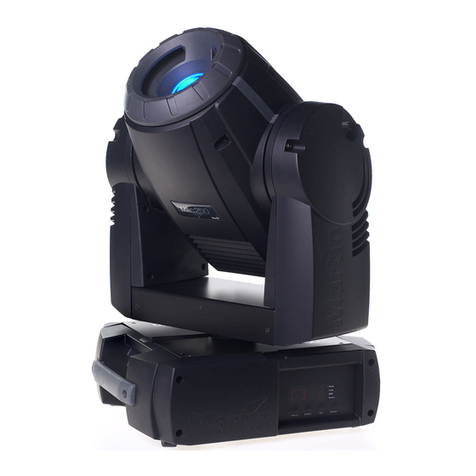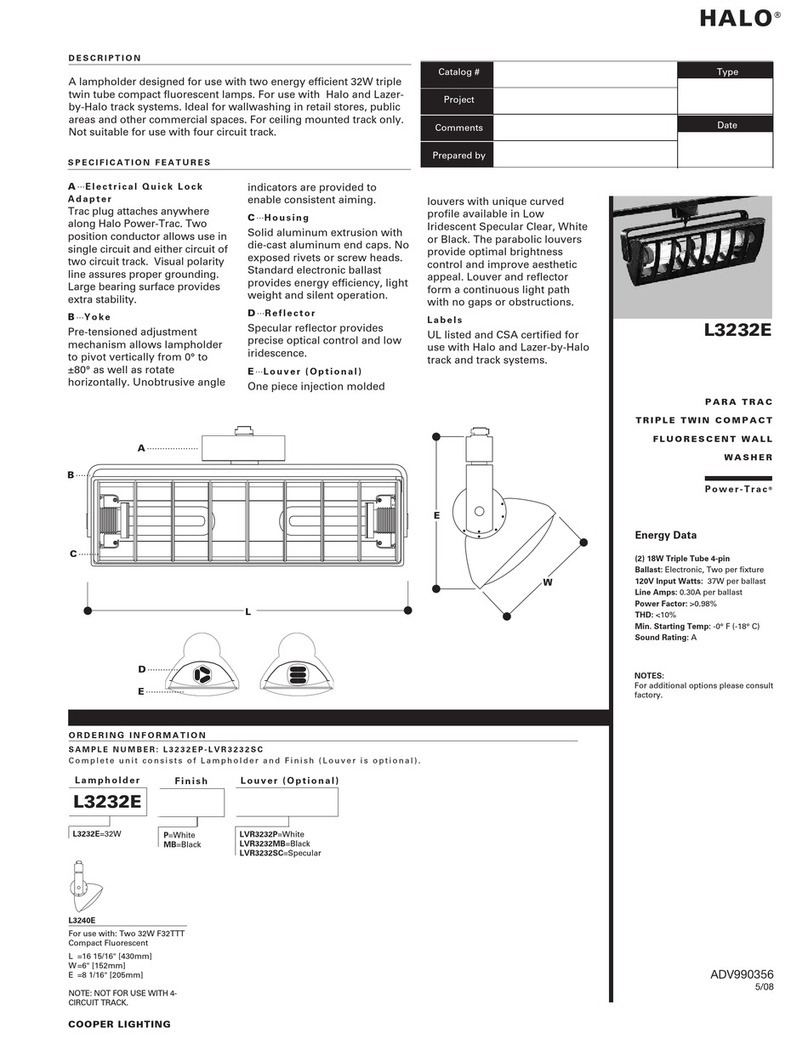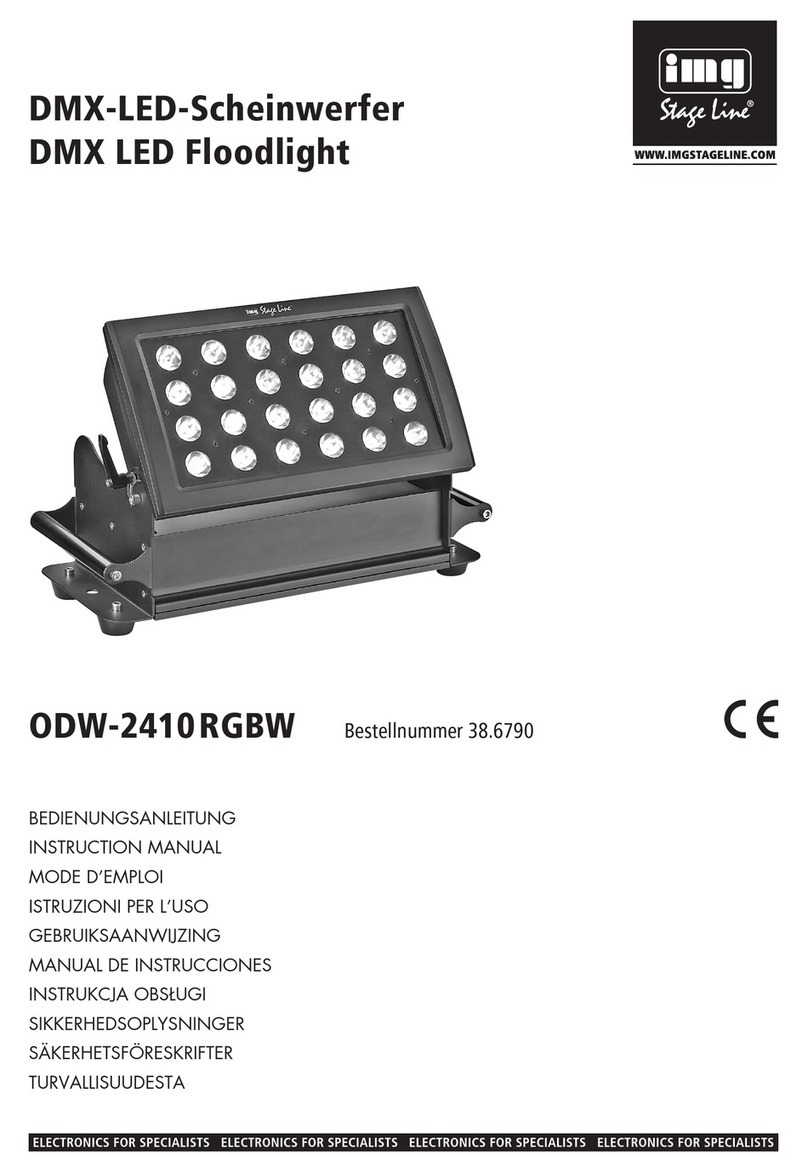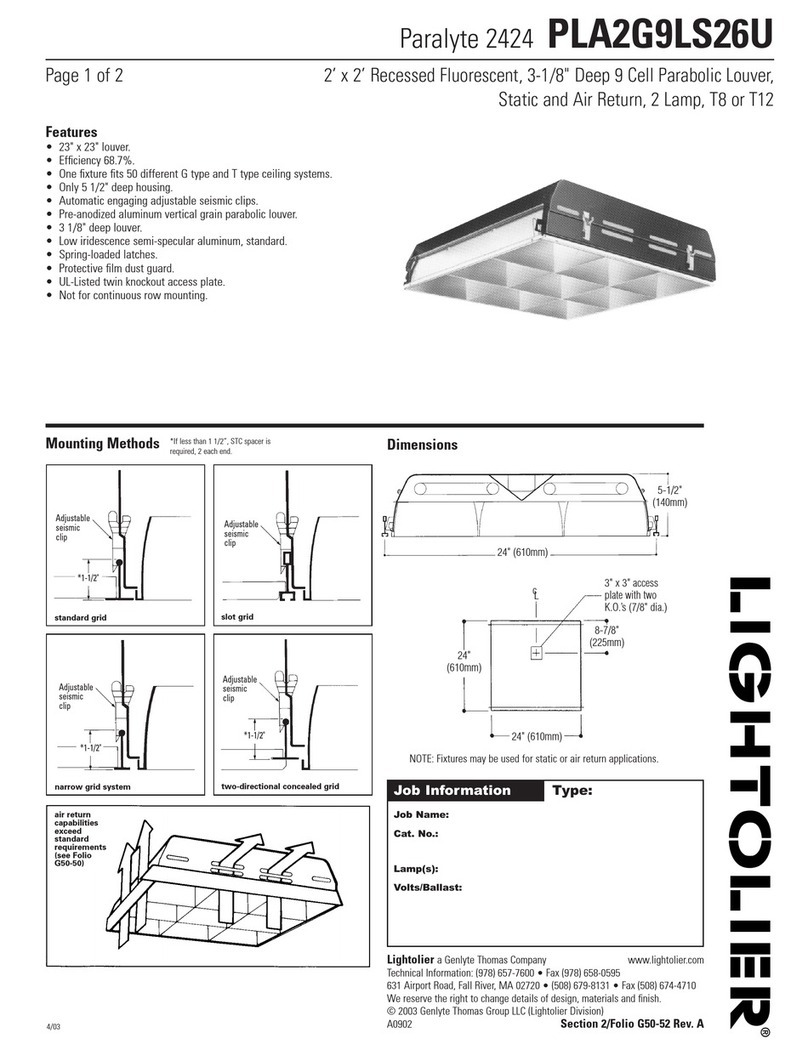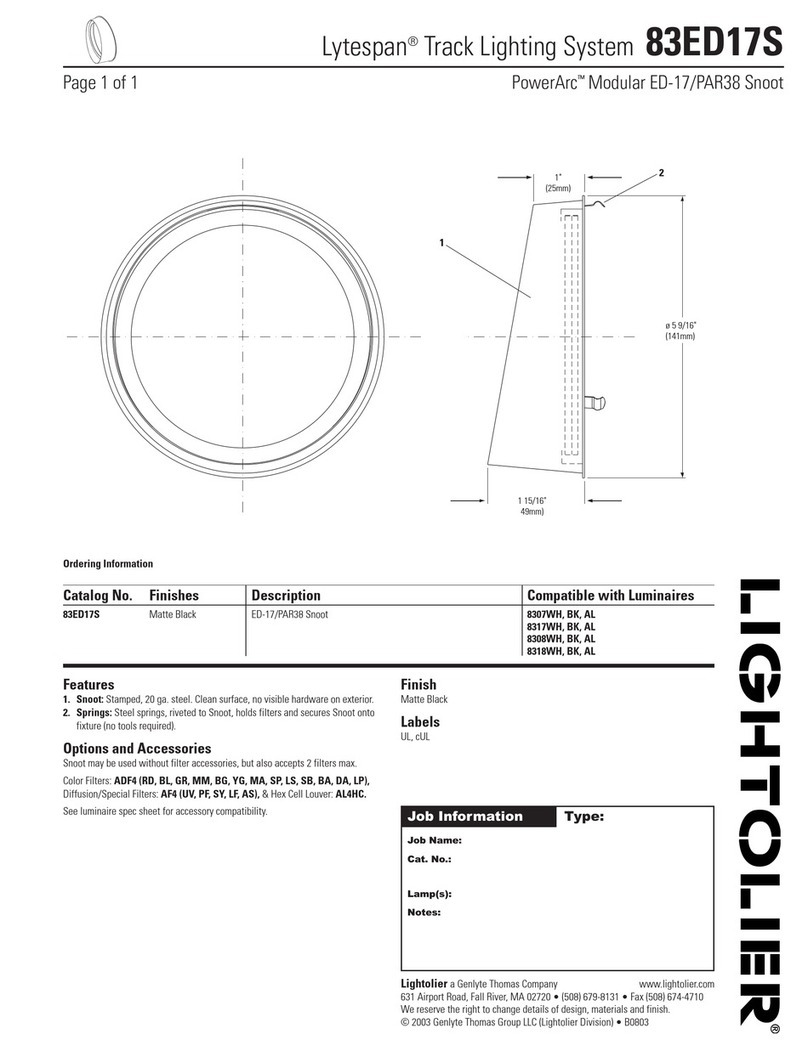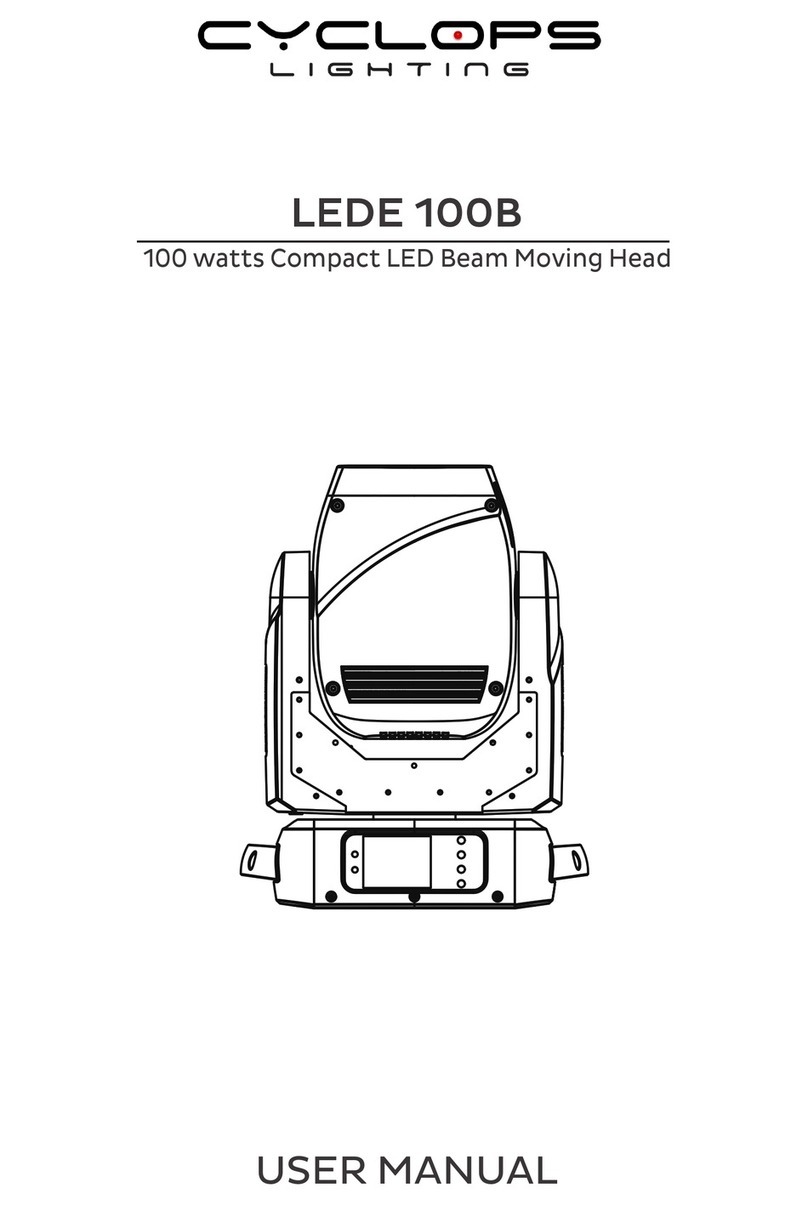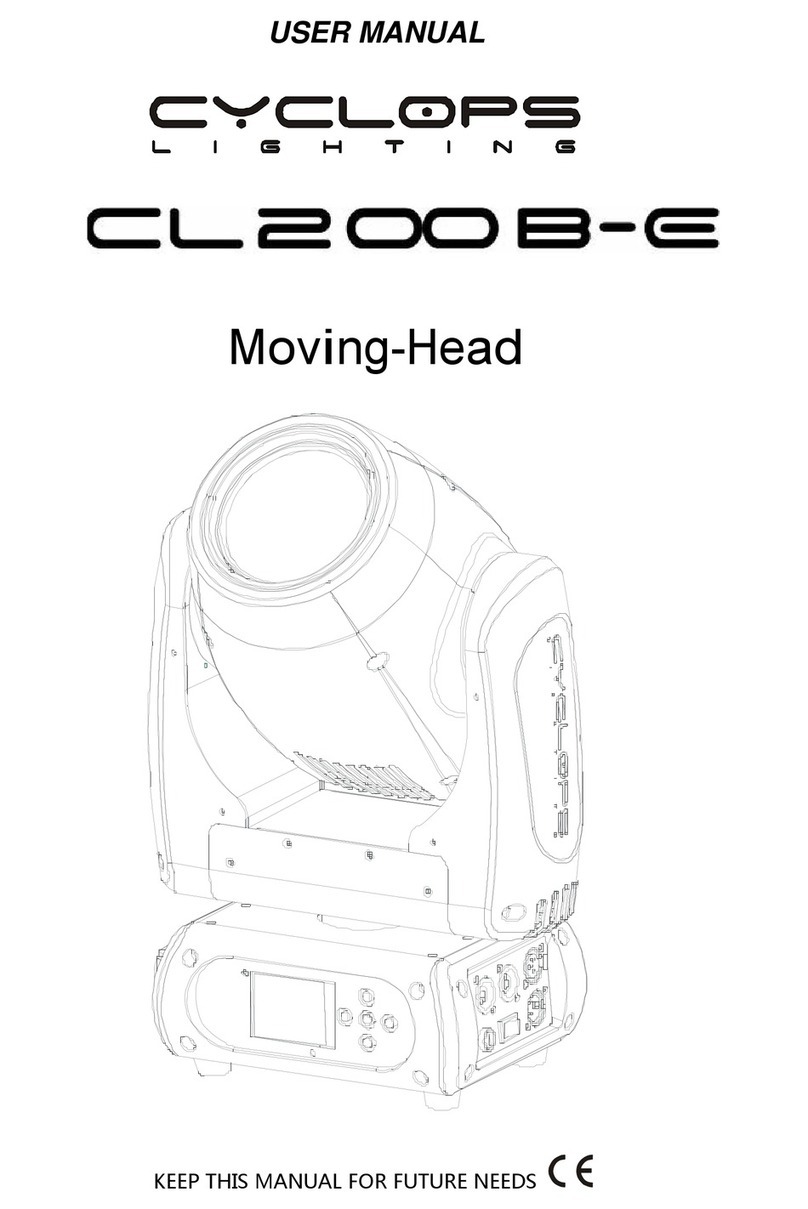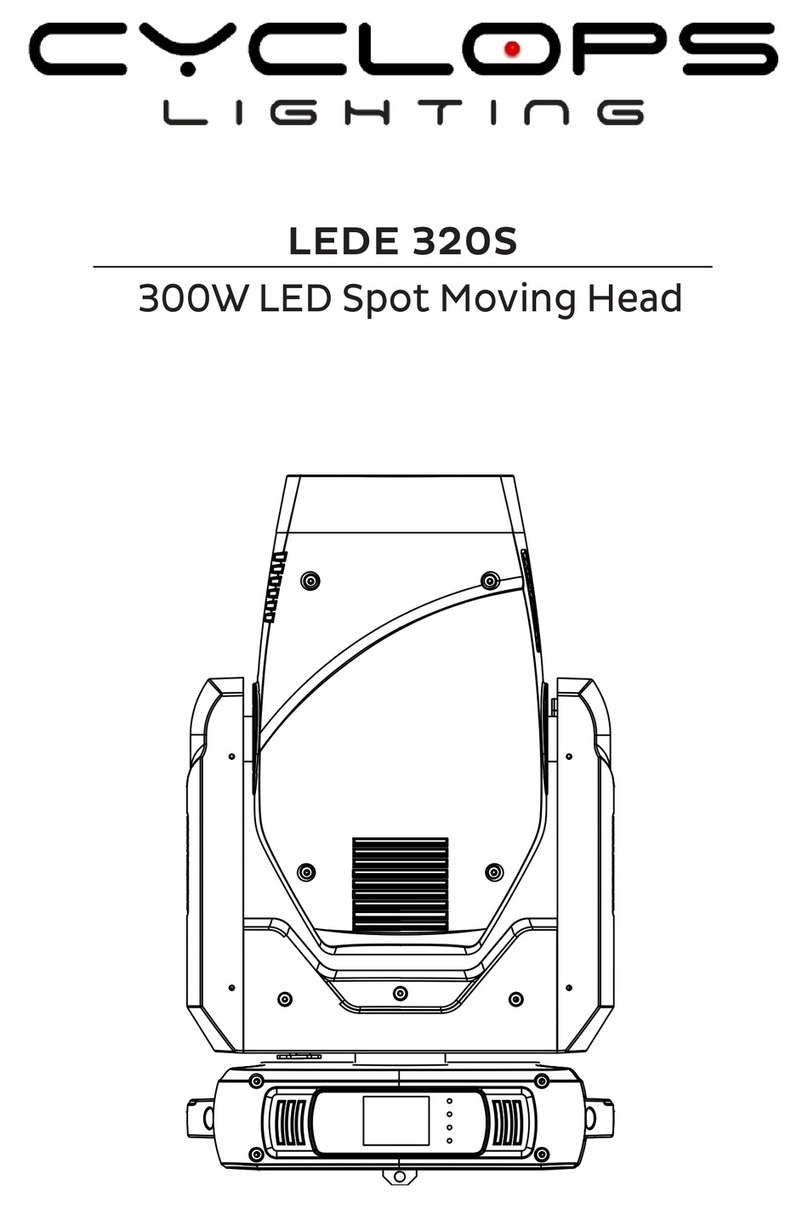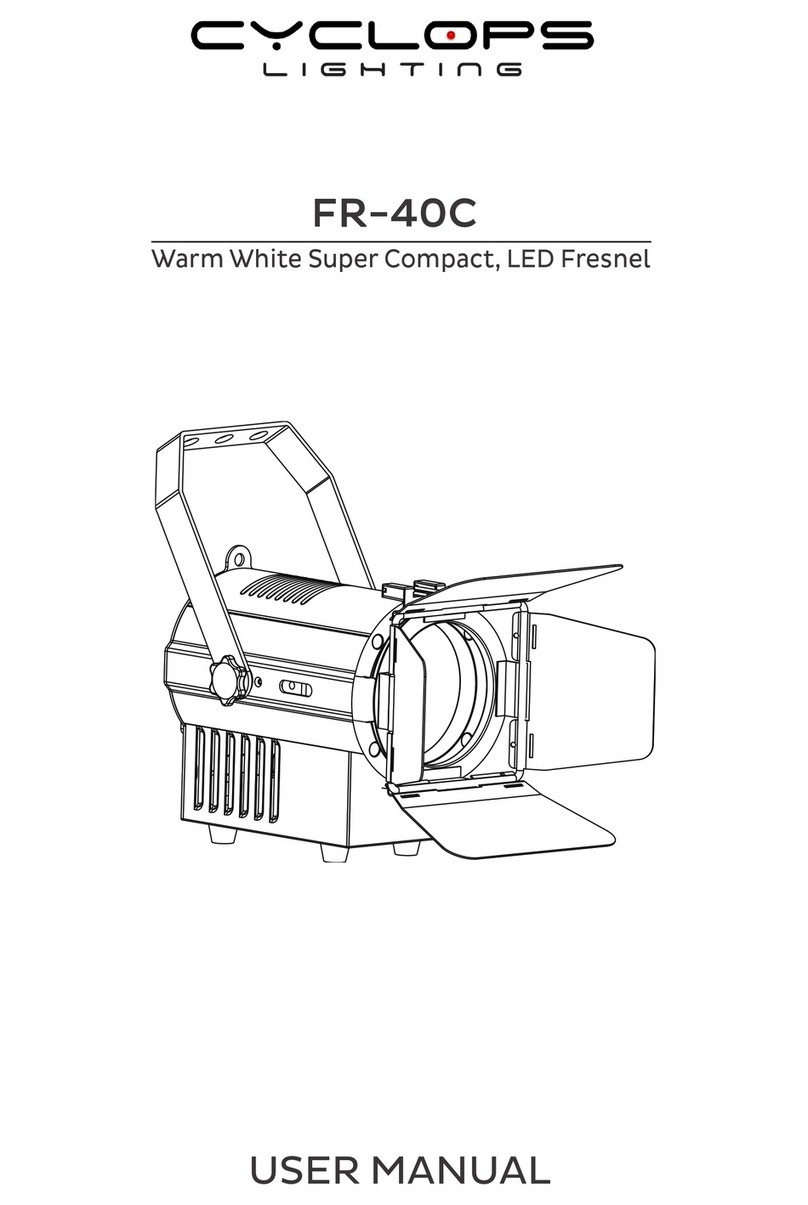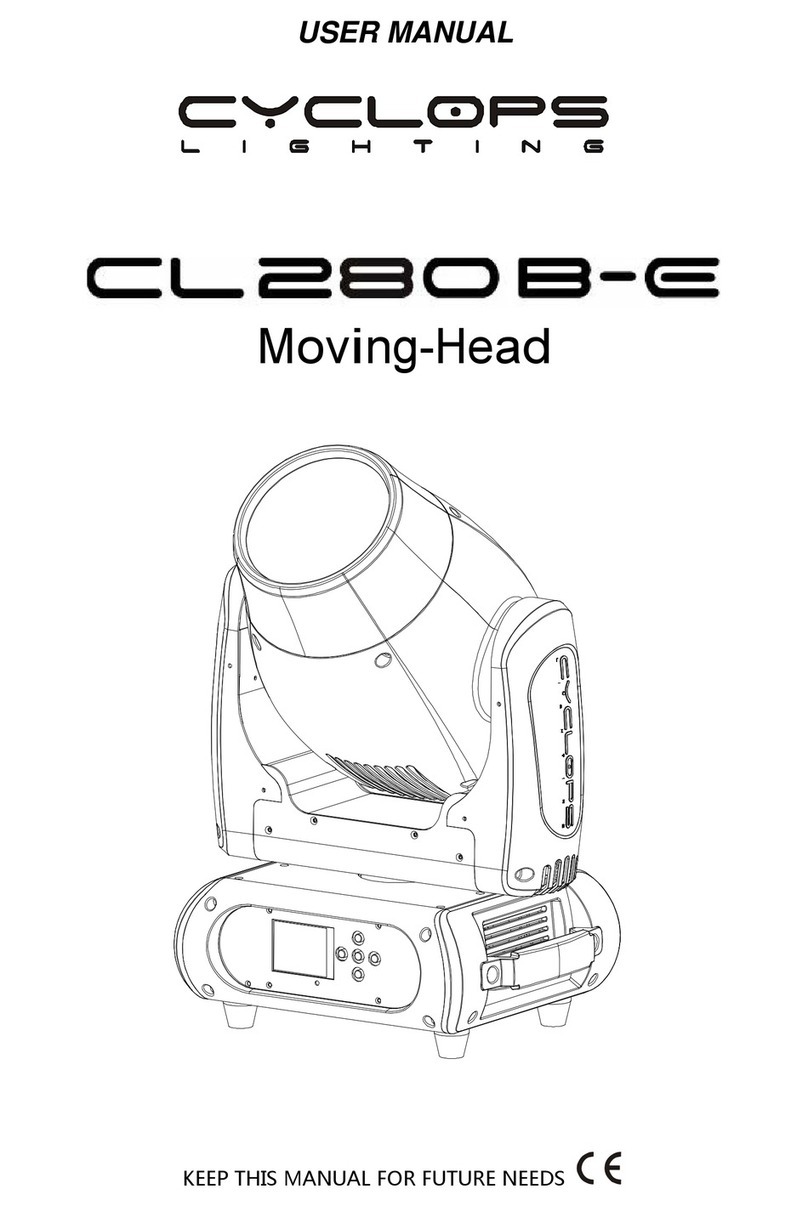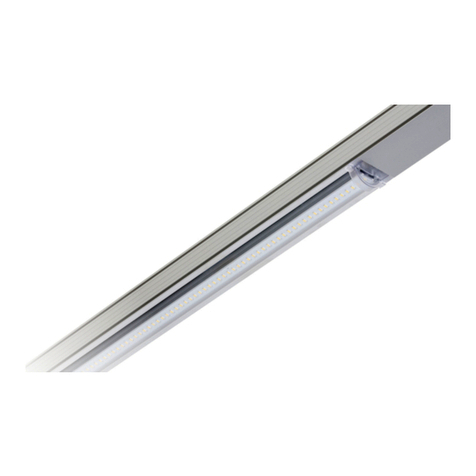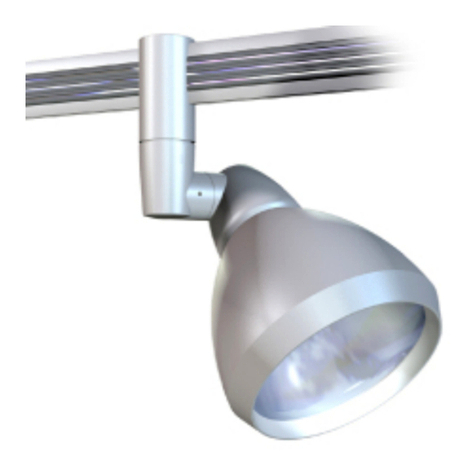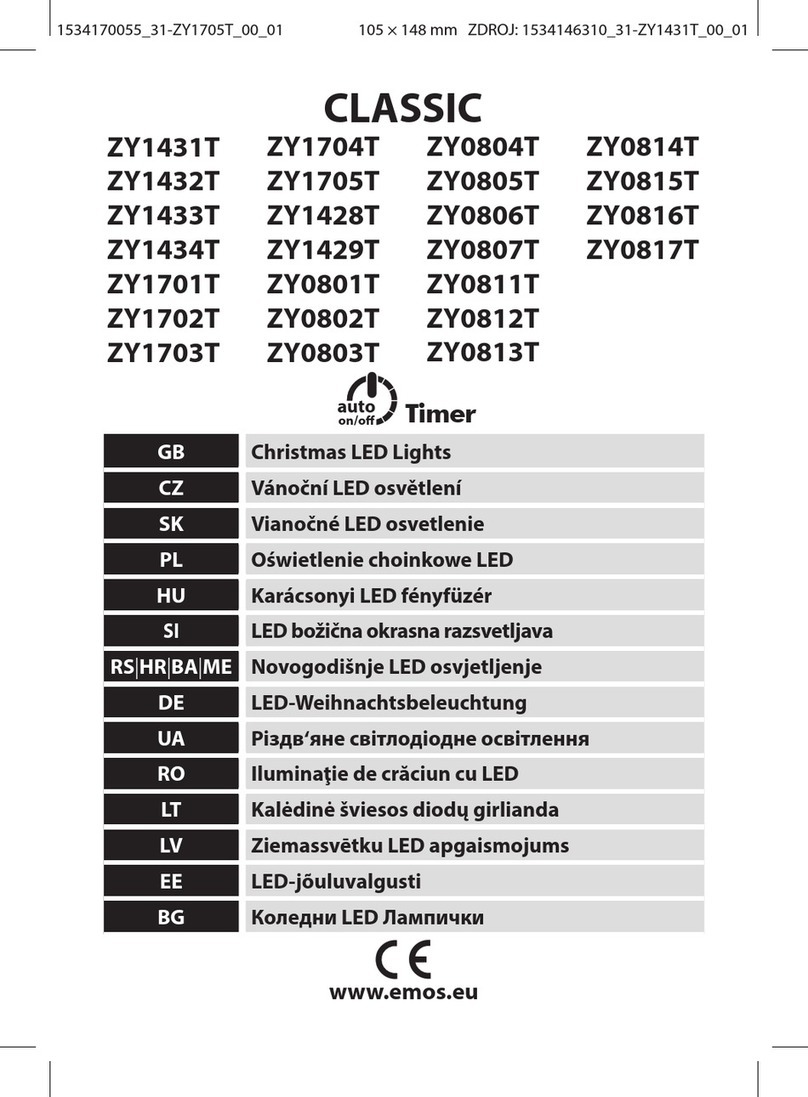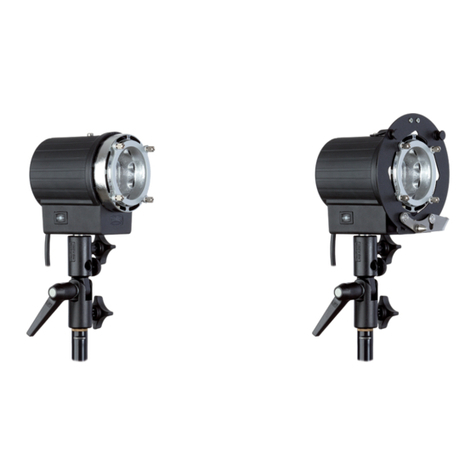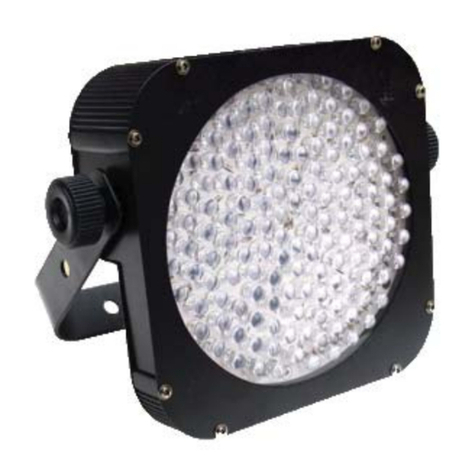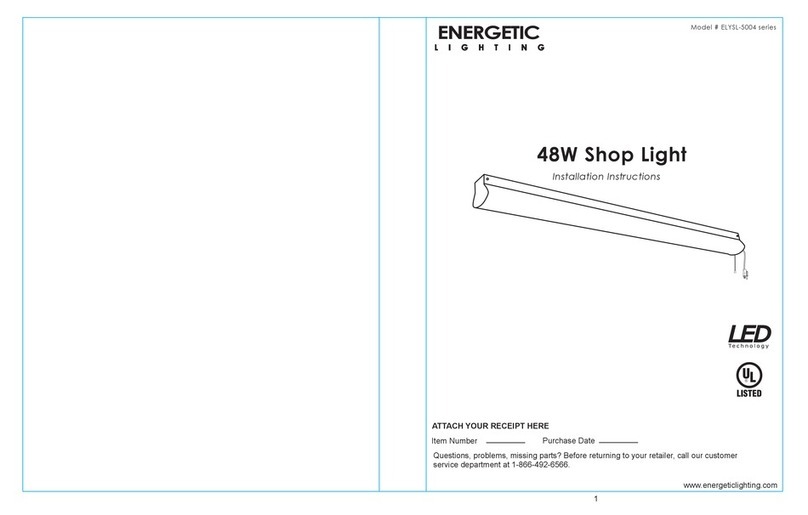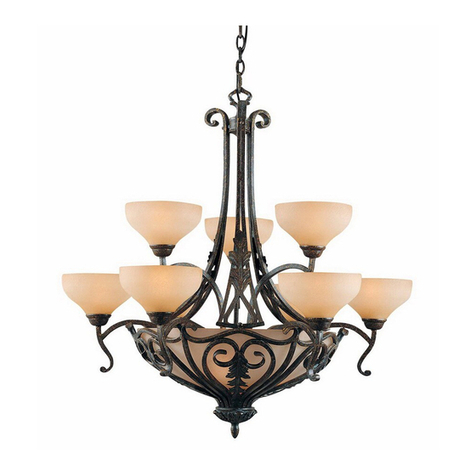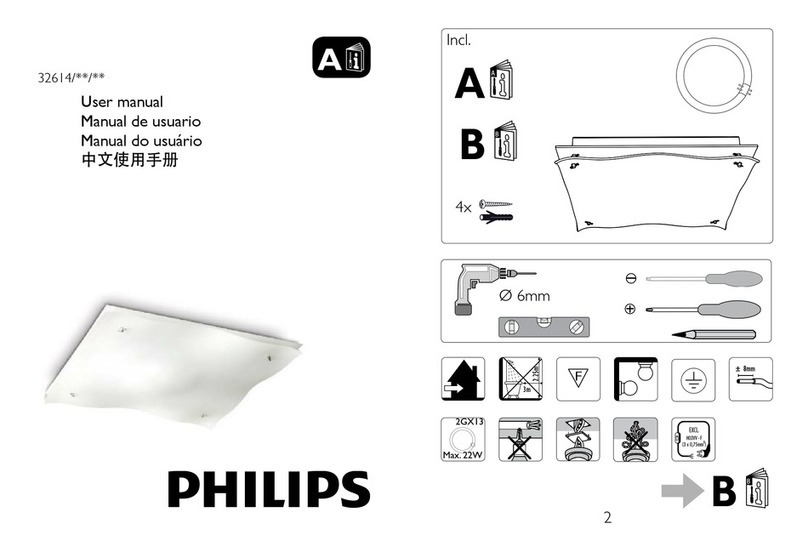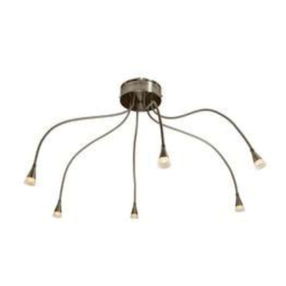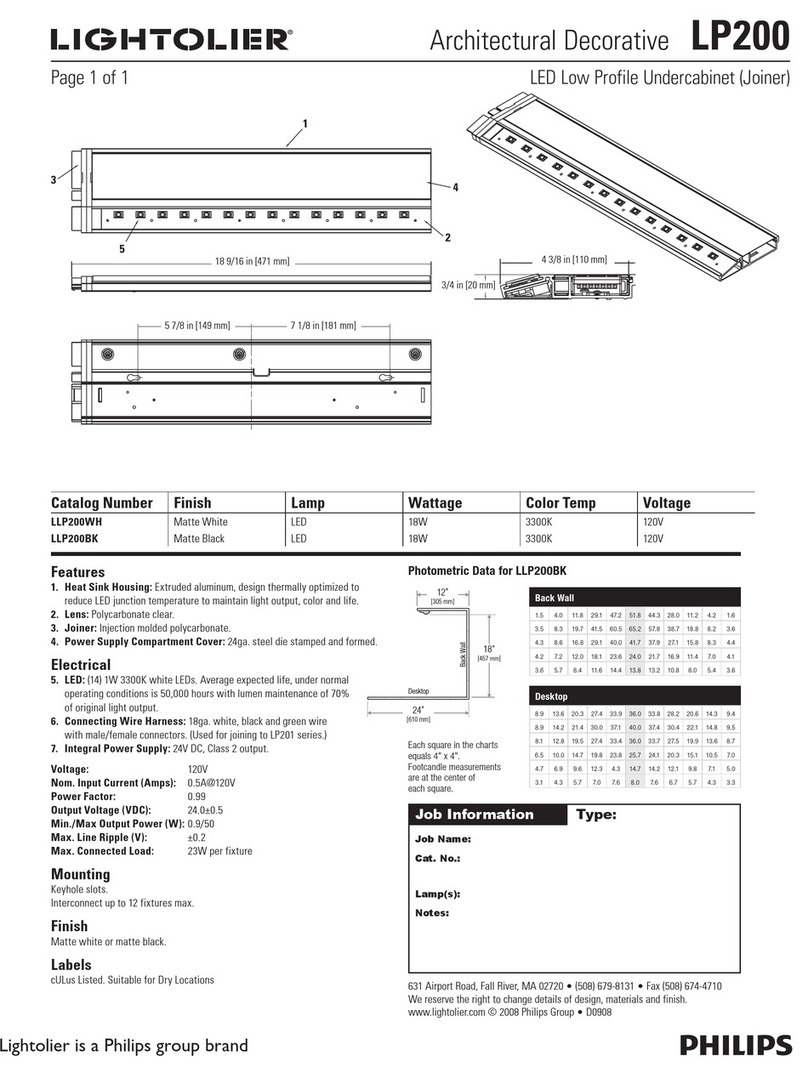
6Version 2.0
Operation
The LEDE 300S can operate in three different modes. In each mode you can run the fixture as a
stand alone fixture or in a master/slave confiugration. This next section will detail the dif-ferences in the
operating modes.
Addressing
All fixtures should be given a DMX starting address when using a DMX signal, so that the correct fixture
responds to the correct control signals. This digital starting address is the channel number from which
the fixture starts to listen to the digital control information sent out from the DMX controller. The allocation
of this starting address is achieved by setting the correct number on the display located on the base of
the device.
You can set the same starting address for all fixtures or a group of fixtures, or make different address for
each fixture individually.
If you set the same address, all the units will start to listen to the same control signal from the same
channel number. In other words, changing the settings of one channel will affect all the fixtures
simultaneously.
If you set a different address, each unit will start to listen to the channel number you have set, based on
the quantity of control channels of the unit. That means changing the settings of one channel will affect
only the selected fixture.
In the case of the LEDE 300S, which is 20/25 channels fixture. If you set, for example, the address in
the 20 channel mode to channel 21, the device will use the channel 21 to 41 for control.
Universal DMX Control
This function allows you to use a universal DMX-512 controller to control the chases and patterns,
dimmer and strobe. A DMX controller allows you to create unique programs tailored to your individual
needs.
RDM control
The LEDE 300S RDM can communicate using RDM (Remote Device Management) in accordance with
ESTA’s American National Standard E1.20-2006: Entertainment Technology RDM Remote Device Man-
agement Over DMX512 Networks.
RDM is a bi-directional communications protocol for use in DMX512 control systems, it is the open stan-
dard for DMX512 device conguration and status monitoring.
The RDM protocol allows data packets to be inserted into a DMX512 data stream without affecting ex-
isting non-RDM equipment. It allows a console or dedicated RDM controller to send commands to and
receive messages from specic xtures.
With RDM function, you can set the DMX address of your fixtures remotely. This is especially useful
when the device is installed in a remote area.
Each LEDE 300S has a factory set RDM UID (unique identication number).
Stand-alone Mode
In this mode, you can run internal program without a controller.
1. Press the Setting icon in in the touch screen.

